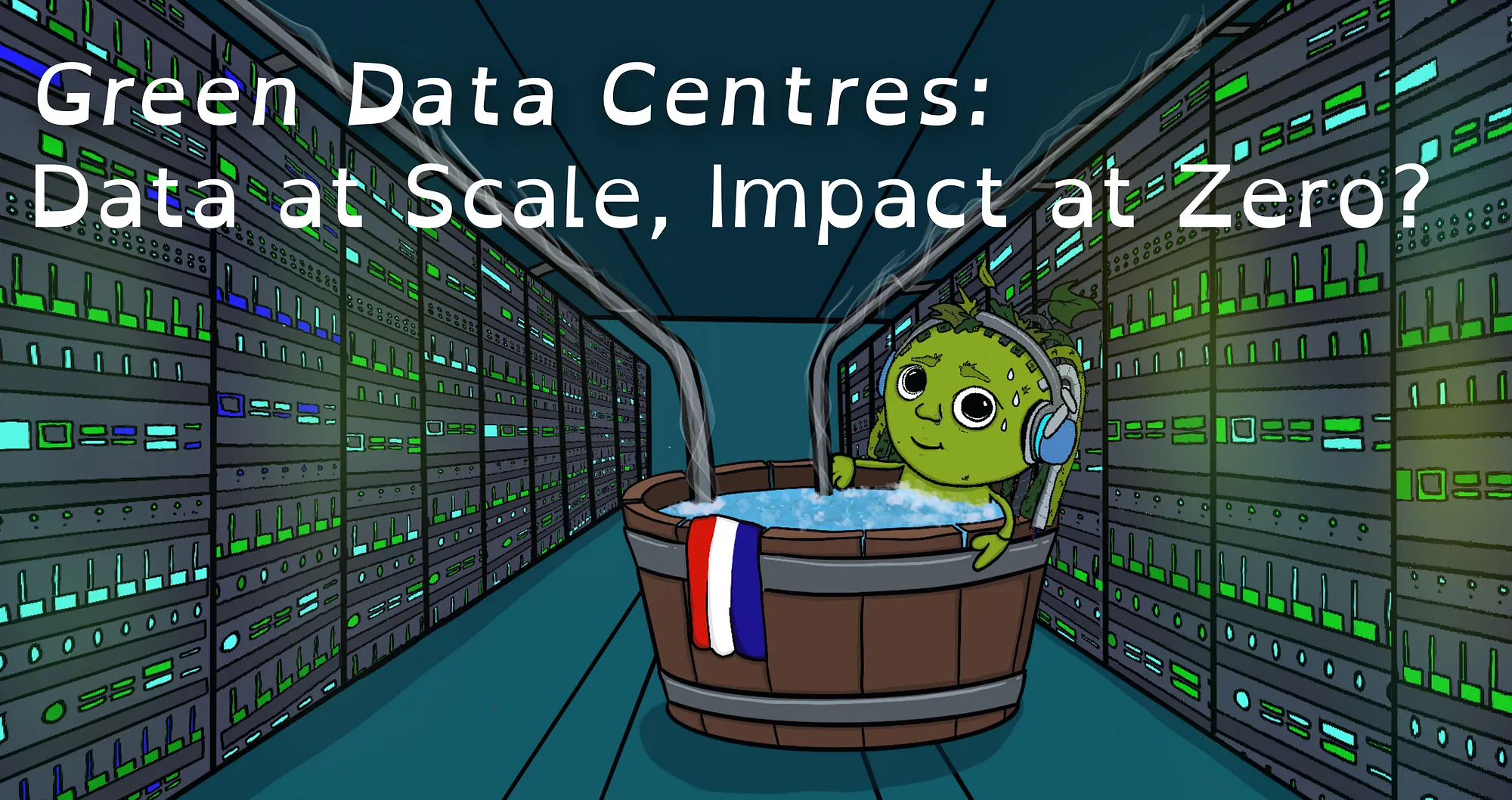
Green Data Centres: Data at Scale, Impact at Zero?
Discover sustainability practices for green data centres. Learn how to scale dat…

This week, I found myself thinking about the gaps in sustainable software development. And if you’re here, I hope you’re thinking about them too.
So roll up your sleeves and grab some gloves. We’re digging into the nitty-gritty of software-related carbon emissions.
When looking into emission calculations, the most covered topic is usually energy. While there are a few ways to measure your IT infrastructure’s energy consumption, there isn’t much talk about the hardware (manufacturing those GPUs for your AI model is not emission-free).
In this article, we’ll look at the ghost in the machine affecting your emission calculations: embodied carbon.
Embodied carbon refers to the total amount of greenhouse gas emissions (CO2e) that come from the materials and manufacturing process of objects. In the scope of the IT industry, this would be the materials and manufacturing process of your servers, the buildings they are stored in, the networking equipment, hard drives, and various smaller and auxiliary components used. For example, let’s take a laptop: the manufacturing process accounts for ±80% of its CO2e while the transportation of that laptop accounts for ±8%*. On average, only ±12% of emissions are from actual usage. Going on the understanding that a laptop is responsible for ±300 kg CO2e emissions, means that emissions caused by creating and transporting that laptop are around 254 kg CO2e.
Now for a server rack, these numbers will differ vastly (servers use far more energy than a laptop). In the Dell whitepaper** Carbon Footprint of a Typical Rack Server, they measured and revealed the embodied carbon of one of their servers to be around 400 kg CO2e while the use of it came to a staggering 5960 kg CO2e.
*These numbers were averaged from a couple of sources, see resources at the bottom of the article
**While this is an old whitepaper, the numbers remain accurate if you look at Dell’s “Product Footprints” studies
Taking into account that the majority of our carbon emissions for IT infrastructure occur before we even switch our servers on, it makes no sense that we ignore those emissions and only focus on calculating the emissions of the system while it runs. As Peter Druker says, “You can’t improve what you don’t measure.”
With the introduction of the European “Fit for 55”, it becomes important to know where all your carbon emissions are buried (no more throwing it over the wall into scope 3, okay?).
This is always the first question that comes to mind, and surprisingly the actual calculations are pretty straightforward:
embodied carbon = quantity x emissions factor
Where:
Every type of device has an emissions factor that needs to be calculated, this should generally be provided by the manufacturer. However, nailing down emissions factors for embodied carbon in IT gear is tricky.
Manufacturers don’t always spill the beans on every emission detail, and everyone seems to have their own way of counting things, like whether to include building emissions or not. It’s a bit of a wild west out there. But as the tech world matures, there’s a growing push for more honesty and a standardised way of doing things.
I’m not sure what changes quicker–software or sustainability advice.
But now that we’re aware that carbon emissions don’t only come from the various devices we use, but from every stage of their creation, we can start thinking more consciously of our usage.
There are many (many many many) elements to becoming a more sustainable and responsible engineer. There is no checklist. No all-encompassing course. No silver-bullet tool.
The best we can do is to continuously expand our sustainability frameworks. Take those courses. Attend those talks. Read the news. Subscribe to my blog 😉.
Make conscious software development fundamental to how you approach every stage of your work – one decision, cluster and device at a time.
While the above was a bit of a brain dump on what embodied carbon is, the implications of embodied carbon are clear: the less we manufacture, the less CO2e we have to worry about.
So when running IT infrastructure you will want to:

Discover sustainability practices for green data centres. Learn how to scale dat…

Explore how energy proportionality affects server efficiency and sustainability.…

Discover the 'Follow the Sun' strategy for greener IT. Learn to optimize workloa…
Get a shared vocabulary of proven Transformation Patterns, common Anti-Patterns, and Paradigm Patterns to have more effective, data-driven conversations about your strategy and architecture.
For a personalized starting point, take our free online assessment. Your results will give you a detailed report on your current maturity and suggest the most relevant patterns to focus on first.
Every Tuesday, we deliver one short, powerful read on AI Native to help you lead better, adapt faster, and build smarter—based on decades of experience helping teams transform for real.